Asana type Standing Asanas Pose type Standing | Strengthens Leg, Ankle | |
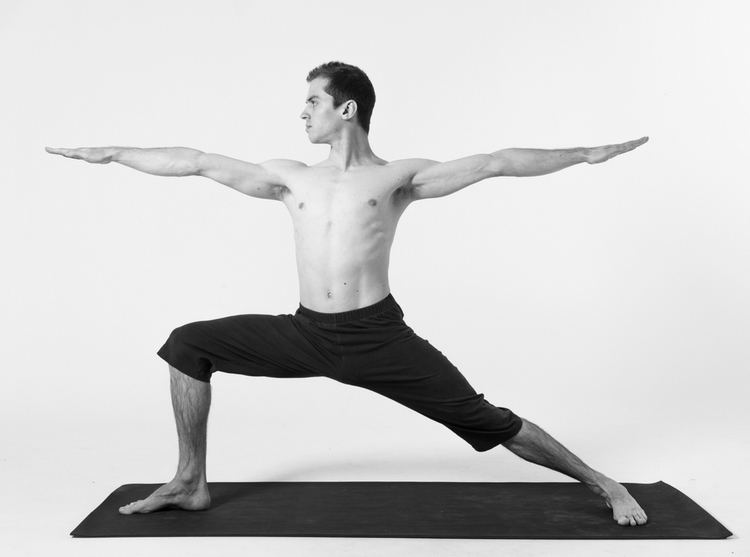 | ||
English name(s) Virabhadrasana I
Warrior Pose II Sanskrit वीरभद्रासन / Vīrabhadrāsana Pronunciation IPA: [ʋiːrɐbʱɐd̪rɑːsɐnɐ] Meaning vīrabhadra: "warrior"
asana: "posture" dṛṣṭi (eye focus) Hastagrahe dṛṣṭi (to palm) Note Consult a doctor before beginning an exercise regime. This asana should be avoided by practitioners who have a weak heart. Stretches Leg, Shoulder, Thorax, Ankle, Groin, Lung Preparatory poses Trikonasana, Vriksasana, Baddha Koṇāsana, Supta Padangusthasana Follow-up poses Trikonasana, Vriksasana, Bakasana Similar Virabhadrasana I, Trikonasana, Utthita Parsvakonasana, Virabhadrasana III, Vriksasana | ||
Warrior ii pose virabhadrasana ii
Virabhadrasana II (Sanskrit: वीरभद्रासन; [ʋiːrɐbʱɐd̪rɑːsɐnɐ]; IAST: Vīrabhadrāsana) or Warrior 2 Pose is an asana commemorating the exploits of a mythical warrior.
Contents
- Warrior ii pose virabhadrasana ii
- Etymology
- Description
- Drishti
- Bandhas
- Variations
- Benefits
- Contraindications
- References
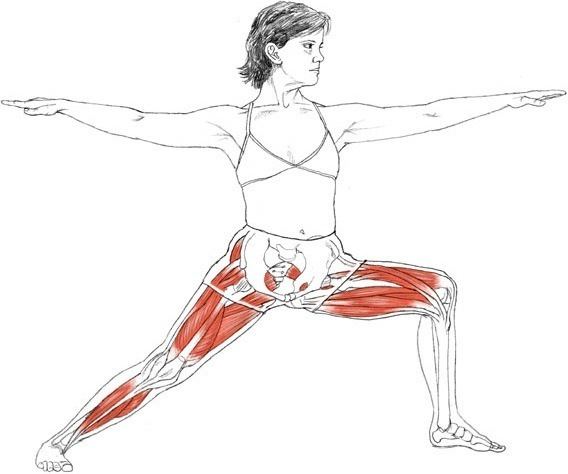
Etymology
The name of this asana is rooted in Hindu mythology.
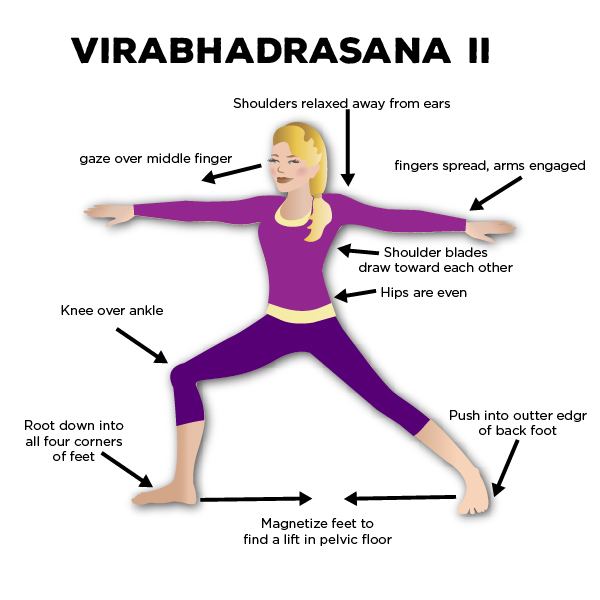
The myth is that the, the powerful priest Daksha made a great yagna (ritual sacrifice) but did not invite his youngest daughter Sati and her husband Shiva, the supreme ruler of the universe. But Sati found out and decided to go alone to the yagna. But when she arrived, Sati entered into an argument with her father. But unable to withstand the insults she spoke a vow to her father, “Since it was you who gave me this body I no longer wish to be associated with it.” She walked to the fire and threw herself into it. When Shiva heard of Sati’s death, he was devastated. He yanked out a lock his hair and beat it into the ground, where up rose a powerful Warrior. Shiva named this warrior, Virabhadra. Vira (hero) + Bhadra (friend) and ordered him to go to the yagna and destroy Daksha and all his guests.

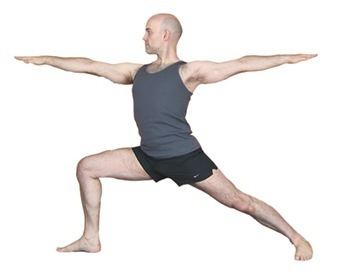
Shiva then arrives at the yagna and sees the rout that Virabhadra had wrought. Shiva absorbs Virabhadra back into his own form and then transforms into Hare, the ravisher. Filled with sorrow and compassion Shiva finds Daksha’s body and giving it the head of a goat, brings him back to life. In the end Sati is also reborn.
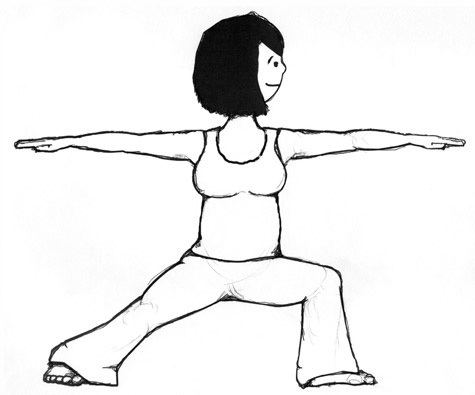
Virabhdadra is not simply a bloody warrior. Like Shiva, he destroys to save: His real enemy is the ego. “By cutting off the head of the ego, Virabhadra helps remind us to humble ourselves.
Description
It is possible to enter Vīrabhadrāsana using vinyasas starting from either Adho Mukha Śvānāsana (Downward facing dog) or from Tāḍāsana.
- Starting from Tāḍāsana
- The arms are stretched up, palm touching.
- Inhaling spread the legs sideways by jumping or stepping, creating a gap of 2/3 body height.
- Exhaling turn the trunk facing to the left while rotating the left foot 90° so it faces forward and the right foot so it points slightly to the right
- Bend the left knee till the thigh is parallel to the floor, avoid extending the bent knee past the ankle and keeping the other leg straight.
- Stretch the right leg, with the knee locked.
- The head, chest, left knee and left foot should be aligned facing forward.
- The head should be horizontal with the gaze on the second finger of the left hand.
- Hold the asana from one to four breaths.
- Return to Step 4 repeat on the other side.
- Finally exhale and jump into Tāḍāsana.
Drishti
The Hastagrahe dṛṣṭi (Sanskrit: हसतग्रहे दृष्टि) at the palm of the arm extended forward is the correct dṛṣṭi for Vīrabhadrāsana II.
Bandhas
Use of bandhas increase the stability of the body in this asana. Both mula bandha (root lock) and uddiyana bandha (abdominal lock) should be engaged. This creates an axial extension in the spine which assists in supporting in the torso as the chest is brought up and back.
Variations
There are two ways to deepen this asana:
While the center of mass becomes lower, the base of support is reduced and it becomes increasingly more difficult to maintain balance and the correct posture.
Benefits
Contraindications
This asana should be avoided by practitioners who have a weak heart. Other obstacles are:
As the gap between the legs increases other problem may present:
